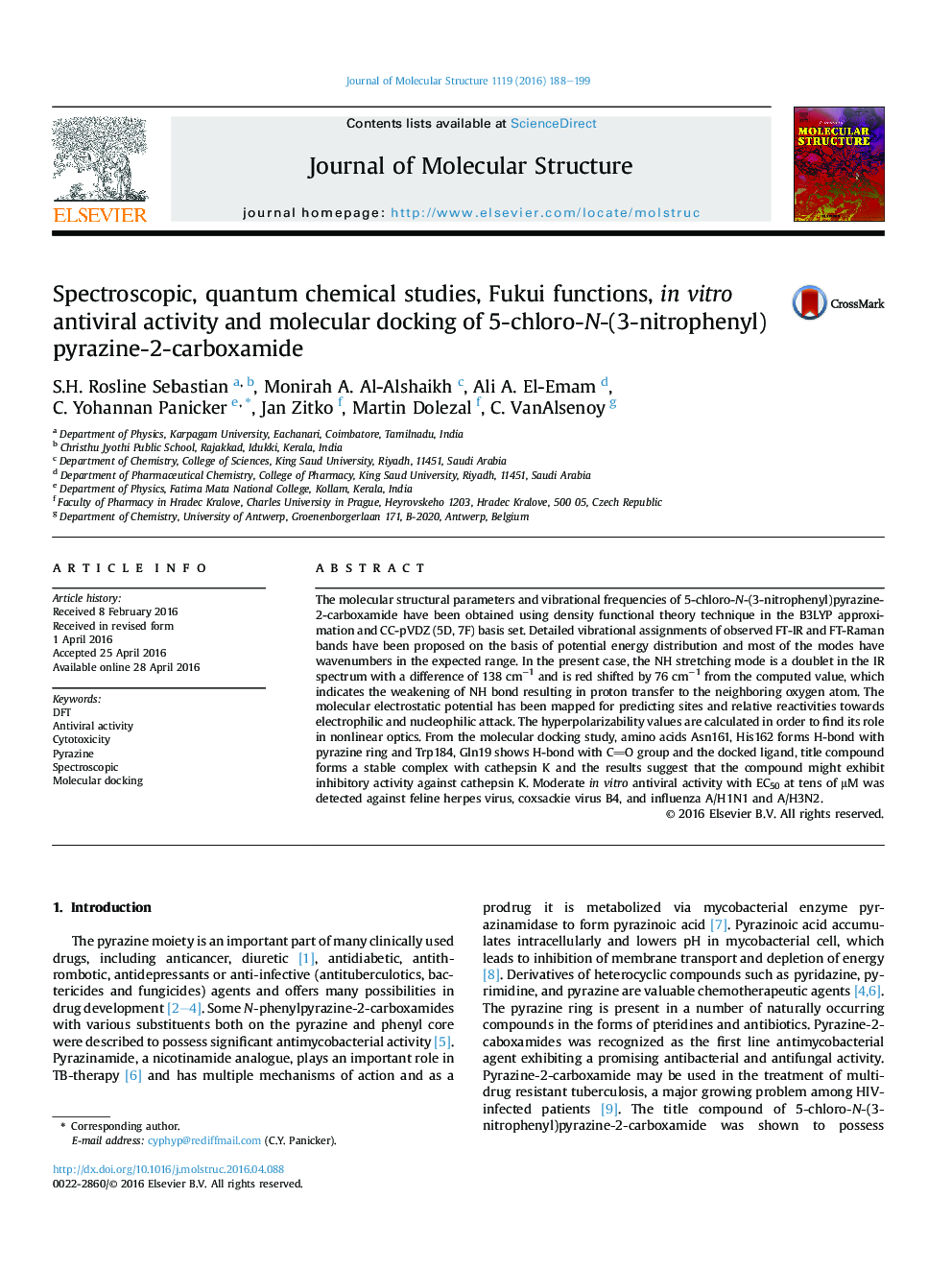| Article ID | Journal | Published Year | Pages | File Type |
|---|---|---|---|---|
| 1404780 | Journal of Molecular Structure | 2016 | 12 Pages |
•IR, Raman spectra, MEP, NLO and NBO analysis were reported.•The wavenumbers are calculated theoretically using Gaussian09 software.•Moderate in vitro antiviral activity with EC50 at tens of μM was detected.•Molecular docking suggests the compound might exhibit inhibitory activity against cathepsin K.
The molecular structural parameters and vibrational frequencies of 5-chloro-N-(3-nitrophenyl)pyrazine-2-carboxamide have been obtained using density functional theory technique in the B3LYP approximation and CC-pVDZ (5D, 7F) basis set. Detailed vibrational assignments of observed FT-IR and FT-Raman bands have been proposed on the basis of potential energy distribution and most of the modes have wavenumbers in the expected range. In the present case, the NH stretching mode is a doublet in the IR spectrum with a difference of 138 cm−1 and is red shifted by 76 cm−1 from the computed value, which indicates the weakening of NH bond resulting in proton transfer to the neighboring oxygen atom. The molecular electrostatic potential has been mapped for predicting sites and relative reactivities towards electrophilic and nucleophilic attack. The hyperpolarizability values are calculated in order to find its role in nonlinear optics. From the molecular docking study, amino acids Asn161, His162 forms H-bond with pyrazine ring and Trp184, Gln19 shows H-bond with CO group and the docked ligand, title compound forms a stable complex with cathepsin K and the results suggest that the compound might exhibit inhibitory activity against cathepsin K. Moderate in vitro antiviral activity with EC50 at tens of μM was detected against feline herpes virus, coxsackie virus B4, and influenza A/H1N1 and A/H3N2.
Graphical abstractFigure optionsDownload full-size imageDownload as PowerPoint slide
